|
Crottles are a number of lichen species in the genus Parmelia . They are the source of the reddish-brown and purple dyes that are used to dye tweed cloth in Scotland. Parmelias are also sometimes called "Shield Lichens", parma is latin for shield and refers to the dimpled "hammered" appearance of some of these lichens - dimpled like a pounded piece of metal used to make a shield. Hammered Crottle is an abundant species of lichen here at Leaning Oaks. It is at its most thickest growth on the twigs and branches of our Garry Oaks, where it is, no doubt, at constant war with the other species of lichen that adorn the branches. Tonight we noticed small bits of Parmelia sulcatata growing on the backs of our cast aluminium deck chairs - this is an adaptable species indeed!
This is one of the species of lichens that often are found adorning the outsides of the nests of hummingbirds in our area, no doubt helping to camouflage the nests.
0 Comments
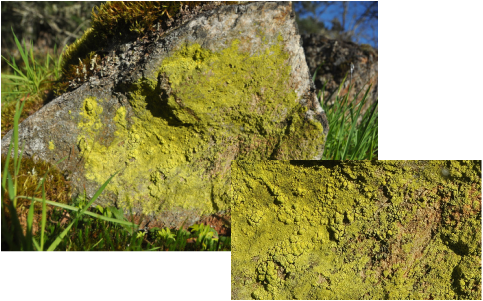 When you see this rock in the meadow with a bright, almost florescent yellow dusting, you couldn't be blamed for thinking that a vandal had come along with spray paint. There are a number of species of brightish yellow lichens that occur on rocks, but this one seems to fit Caloplaca citrina. C. citrina is found from Alaska to California and can be on a coastal rocks as well as dry land. 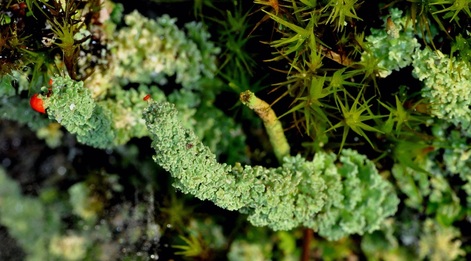 This lichen (Cladonia bellidiflora) is found in a wide variety of habitats over much of the temperate regions in both the northern and southern hemisphere. Here at Leaning Oaks it was photographed on dead wood, growing in the company of other mosses and lichens. A number of species of Cladonia have the bright red fruiting structures or apothecia. A British website decribes this species rather elegantly: "Non-fruiting podetia often tall, generally unbranched, gradually tapered, terminating in points or small cups with red pycnidia, podetial surface clothed in densely layered, blue-green or yellow-green, palmately incised squamules that peel upwards and which diminish evenly in size from base to tip of the podetium, soredia absent; apothecia bright red, on shorter and more irregularly tapered and squamulose podetia.......for reasons I cannot quite explain reminds me of Japanse Pagodas." Other English names for Cladonia furcata were Cup Lichen and Many-forked Cladonia - luckily the one that was the most fun is also from BC Species and Ecosystems Explorer (http://a100.gov.bc.ca/pub/eswp/search.do); the provincial source for taxonomy! This plant was found growing on a rock amongst a moss (that will be the subject of another day, no doubt). The range is thought to be partly circumpolar and is found through western North America. It is found at lower elevations and in either open or shaded forests.
Lungwort is a large, leafy lichen that is found on Big-leafed Maples, Garry Oak and sometimes Douglas-fir branches and trunk. It is loosely attached and after high winds there will be big chunks strewn about.
Lobaria pulmonaria has a great ring to it--and sounds much more appealing than "Lungwort"! The name comes from this plants resemblance to the inner surface of a lung and was apparently used to treat pneumonia and other lung diseases because of this similarity. Where do you suppose Cladonia macilenta got it's English name? The genus name, Cladonia, is Greek for "club-like". At this time of year the bright red apothecia (the fruiting bodies) provide a counter point to all the lush greens that we are surrounded with. This miniature Dr. Seuss forest was growing on a windfall Douglas-fir log. They are relatively common on stumps, fenceposts and bark.
I was sure that the "Old Man's Beard" that covers many of the Garry Oak branches would be easy to identify. Apparently not! I asked experts, cut at the cortex, studied the books.....and was happiest when I found that the "Macrolichens of the Pacific Northwest" by McCune and Geiser lumps a swack of similar ones as part of the Usnea filipendula group with a comment that it would be "futile to apply" a more specific species name until the taxonomy of the group is worked out. I will continue to try and identify it and post what I find.
The Golden-crowned Kinglets and other small birds love to forage amongst the branches, pulling out whatever wee arthropods they find there. To me, the festooned branches give the appearance of a long established forest and woodland. 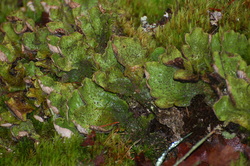 There are 3 species of these green (when wet) Peltigera in our area with black "freckles". This one, Peltigera brittanica is the commonest on the west coast and the Silver-edged Pelt, Peltigera aphthosa is the more common one in the interior of the province. The black "freckles" are cephalodia, which are cyanobacteria containing warts. In this species these growths are raised and free at the edges and easily brushed off (hence the "Deciduous" name, I assume). In Silver-edged and Ruffled Pelts (P. leucophlebia) they are recessed and rather more difficult to dislodge. In addition the Ruffled Pelt is shaded on the undersurface so that it is white on the edges and gradually changes to black in the center, while in the other two species the colour change is sharply demarked. At Leaning Oaks, Deciduous Pelt grows on rocks and boulders in open areas that have a moss cover. Other common names for this species include British Felt Lichen and the Flaky Freckle Pelt. |
AuthorsTwo biologists on a beautiful property armed with cameras, smart phones and a marginal knowledge of websites took up the challenge of documenting one species a day on that property. Join along! Posts and photographs by Leah Ramsay and David Fraser (unless otherwise stated); started January 1, 2014. Categories
All
Archives
May 2025
|
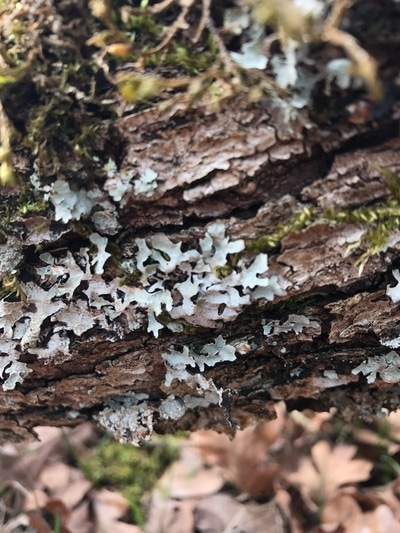
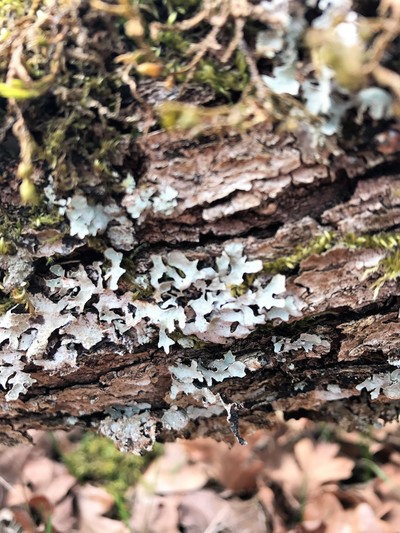
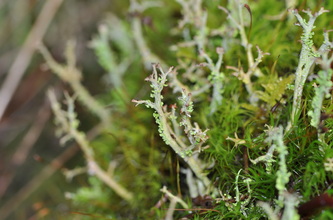
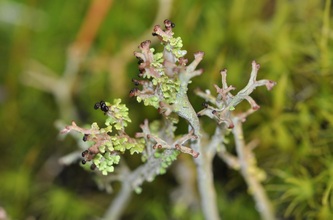
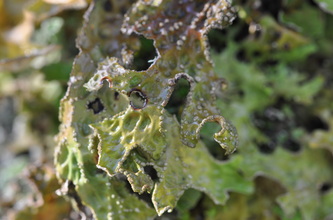
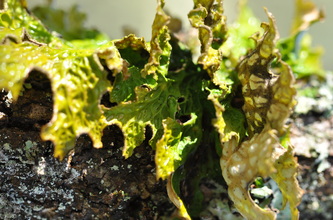
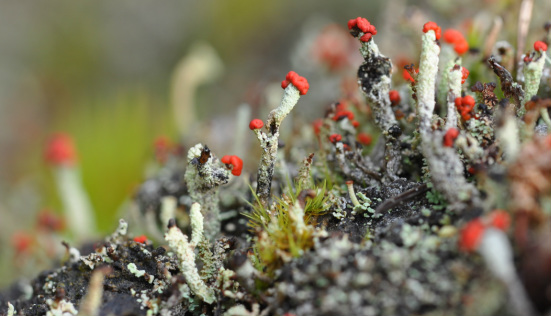
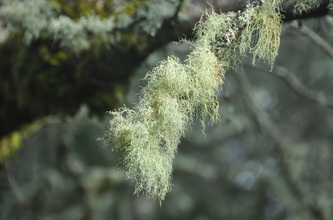
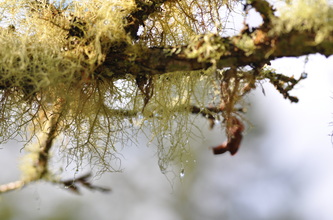
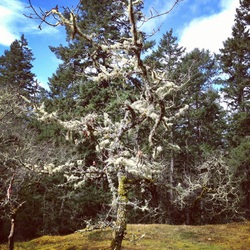
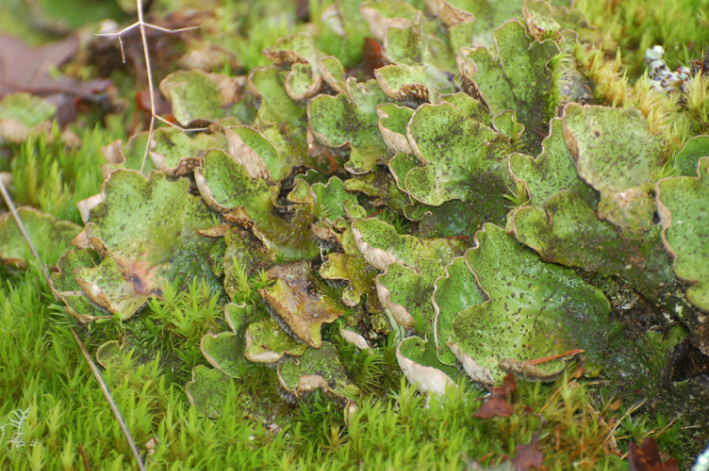
 RSS Feed
RSS Feed